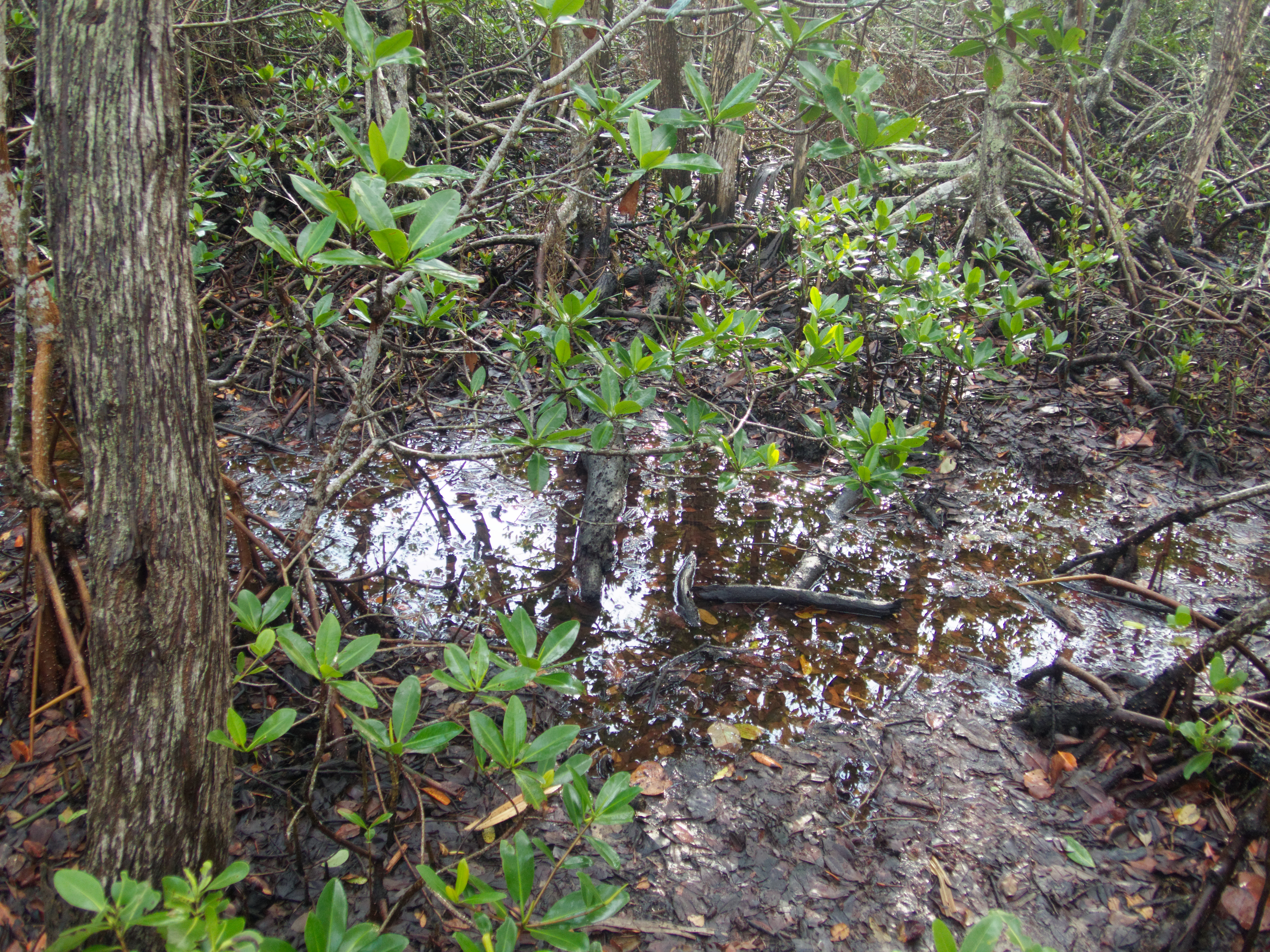To spot the mangrove Rivulus, it’s important to first identify the microhabitat they live in. For that, a deep observation of the mangrove is needed. This fish mostly lives where the black and red mangroves are present, where there is a little of water (between 25 and 35 ppt), a lot of mud and leaf litter. To catch the fish, it’s necessary to use hand-made traps that are put in the mud in a way the fish can get in (usually in or close to crab burrow, at the basis of tree trunk,…). Watch also in the logs where they can stay out of the water. Here are presented some pictures taken at good “Rivulus places” in the Florida mangrove at Emerson Point.
[foogallery id=”2993″]

